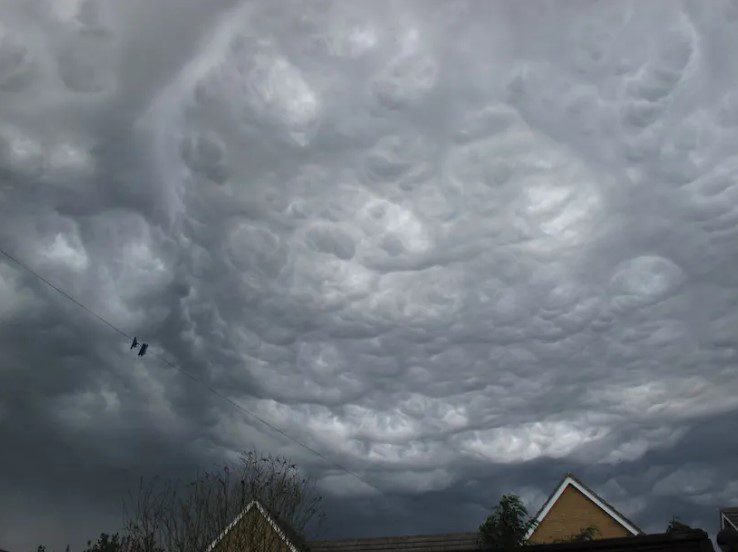Nature is both stunningly beautiful and incredibly terrifying and one relatively new reminder of this is this cloud formation that looks straight out of a cosmic horror story!
For years, many people from all over the world would send the founder of The Cloud Appreciation Society, Gavin Pretor-Pinney, pictures of these unique but scary cloud formations, trying to find out what exactly they were.
However, they still had no official name so the mission was to get this category of cloud they called “undulatus asperatus” officially recognized.
Surprisingly enough, the World Meteorological Organization recognized Pretor-Pinney’s clouds in the updated International Cloud Atlas for the first time earlier this week – no less than 9 years after the classification was submitted for the first time!
The name has been changed to “asperitas” and it’s also important to mention that it is the first added formation to the Atlas in more than half a century so it’s a notable event!
As for the way you can recognize this scary cloud, Pretor-Pinney says that the formations are “localized waves in the cloud’s base, either smooth or dappled with some smaller features, sometimes descending into rather sharp points, as if seeing a roughened sea surface from under it. Varying levels of illumination as well as thickness of cloud can lead to dramatic visual effects.”
Part of the reason they look so unsettling is the fact that they tend to be low-lying.
The undulating wave pattern is caused by weather fronts in the atmosphere.
All of these characteristics make the sky look apocalyptic, being similar only to movie settings where the end is near.
Imagine looking out the window or going outside for the first time in the day and seeing these clouds!
One quick look up and you’ll instantly get the feeling that something really bad is approaching!
However, no matter how scary they may appear, it’s still nice to see a crowdsourced project get some well-deserved recognition from the scientific community! Besides, they are still very impressive and something we can’t quite look away from, thanks to their eye-catching beauty.













Leave a Reply